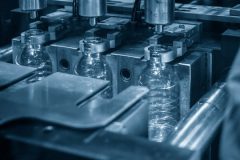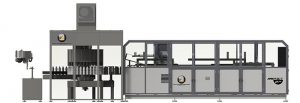Blow molding is an amazing process used to make many plastic objects we see and use every day. From water bottles to toys, blow molding helps create items in various shapes and sizes. But how blow molding work? Let’s explore this fascinating process step by step.
What is Blow molding?
Blow molding is a strategy used to make empty plastic parts. It includes blowing up a hot, delicate plastic cylinder inside a form until it takes the state of the shape. Consider exploding an inflatable inside a jug. The inflatable occupies the space and takes the state of the jug. Blow shaping works along these lines.

Kinds of Blow molding
There are three fundamental sorts of Blow molding:
- Extrusion Blow Molding
- Injection Blow Molding
- Stretch Blow Molding
Extrusion Blow Molding
Extrusion Blow Molding is the most well-known type. This is the secret:
Softening the Plastic
To start with, plastic pellets are softened in an extruder. The extruder resembles a major screw inside a warmed barrel. As the screw turns, it pushes the plastic pellets forward. The intensity dissolves the plastic, transforming it into a gooey, delicate material.
Shaping the Parison
The softened plastic is then pushed through a bite of the dust, making a cylinder called a parison. The parison is delicate and hot.
Blowing the Parison
The parison is clipped inside a shape. Air is then blown into the parison, swelling it like an inflatable. The gaseous tension pushes the plastic against the walls of the form.
Cooling and Eliminating
The shape is cooled, generally with water. As the plastic cools, it solidifies and takes the state of the shape. The shape then, at that point, opens, and the recently framed plastic part is taken out.
Injection Blow Molding
Infusion blow shaping is used for making little, exact articles like medication bottles. This is the secret:
Making the Preform
In the first place, plastic pellets are softened in an infusion-forming machine. The liquefied plastic is infused into a shape to make a preform. A preform seems to be a test tube with a container neck.
Warming the Preform
The preform is then warmed once more, making it delicate and adaptable.
Blowing the Preform
The warmed preform is put into a container formed shape. Air is blown into it, expanding the preform to fit the form.
Cooling and Launching
The form is cooled, the plastic solidifies, and the new container is taken out from the shape.
Stretch Blow molding
Stretch blow shaping is used for serious areas of strength for making, bottles like soft drink bottles. Here is the interaction:
Making the Preform
Like infusion Blow molding, plastic pellets are liquefied and infused into a shape to make a preform.
Warming the Preform
The preform is warmed to make it delicate once more.
Extending and Blowing
The preform is put in a jug-formed shape. A bar extends the preform the long way while air blows into it, expanding the preform to the state of the shape.
Cooling and Eliminating
The form is cooled, the plastic solidifies, and the new container is removed from the shape.
Materials Used in Blow Molding
A few kinds of plastics can be used in Blow molding, including:
- Polyethylene (PE)
- Polypropylene (PP)
- Polyethylene Terephthalate (PET)
- Polyvinyl Chloride (PVC)
Every plastic has various properties, making them appropriate for different items. For instance, PET is regularly used for, serious areas of strength for clarifying refreshments.
Benefits of Blow molding
Blow molding enjoys a few benefits:
- Effectiveness: It can create numerous things rapidly, making it ideal for large scale manufacturing.
- Practical: The cycle is moderately cheap, particularly for high-volume creation.
- Flexibility: Blow molding can make complex shapes and sizes, giving plan adaptability.
- Material Assortment: Various kinds of plastics can be used, each offering novel advantages.
Disadvantages of Blow Molding
While blow shaping is exceptionally helpful, it has a few downsides:
- Restricted Accuracy: It probably won’t be appropriate for making parts that need extremely high accuracy.
- Squander Material: The interaction can create squandered material, albeit a lot of it very well may be reused.
- Starting Expenses: Setting up blow-shaping gear can be costly.
Common Applications of Blow Molding
Blow shaping is used in numerous ventures to make different items, including:
- Bottles
- Compartments
- Toys
- Car Parts
- Family Things
Every item profits from Blow molding’s capacity to proficiently create sturdy, empty plastic parts.
How Blow Molding Impacts Our Daily Lives?
Blow molding is wherever in our day-to-day routines. The water bottle you drink from, the cleanser bottle in your restroom, and the gas tank in your vehicle are made using blow shaping. This cycle makes lightweight, strong, and practical items that make our lives simpler and more helpful.

Environmental Considerations
Blow molding can affect the climate. Notwithstanding, many organizations are attempting to decrease this effect by:
- using Reused Materials: using reused plastics decreases waste and monitors assets.
- Further developing Productivity: Present-day machines are more energy-effective, decreasing the carbon impression of creation.
- Reusing Waste: Squander plastic from blow molding can frequently be reused and reused.
Future of Blow Molding
The eventual fate of blow shaping looks encouraging. Advancements and upgrades in innovation are making the cycle more proficient and harmless to the ecosystem. Here are a few patterns to watch:
- High-level Materials: New kinds of plastics that are more grounded and more eco-accommodating are being created.
- Automation: Automation is making blow shaping quicker and more exact, decreasing expenses and expanding creation rates.
- 3D Blow molding: This innovation takes into consideration significantly more intricate shapes and plans, opening up additional opportunities for items.
Final Words
Blow molding is an entrancing and fundamental cycle in assembling. It makes a considerable lot of the plastic items we use consistently. By understanding how blow shaping functions, we can all the more likely value the innovation and development that goes into making these things. From water jugs to vehicle parts, Blow molding makes our cutting-edge life conceivable. As innovation propels, blow molding will keep on advancing, acquiring significantly additional thrilling improvements in what’s to come.



